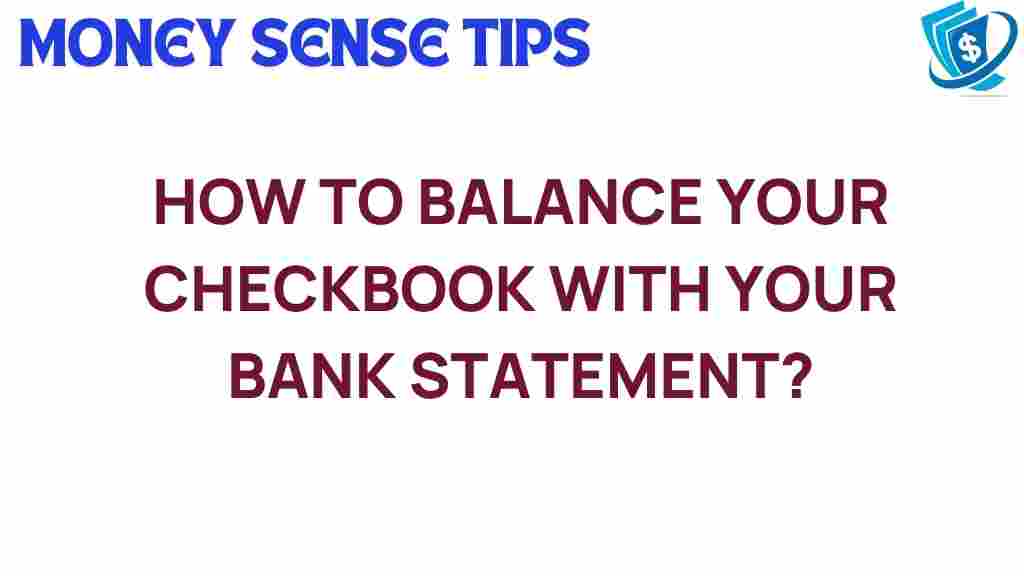Mastering Your Finances: The Art of Balancing Your Checkbook
In today’s fast-paced financial landscape, mastering your finances is more important than ever. One of the fundamental skills in personal finance and financial management is balancing your checkbook. Whether you’re a seasoned financial guru or just starting your journey towards better money management, understanding how to effectively handle your checkbook can lead to improved budgeting, reduced expenses, and increased savings. In this article, we’ll explore the art of balancing your checkbook and provide you with the tools you need to achieve financial stability.
Understanding Checkbooks and Bank Statements
A checkbook is a physical or digital record that helps you track your checking account transactions. It contains a register where you can enter deposits, withdrawals, and other account activities. A bank statement, on the other hand, is a monthly report from your bank that summarizes your account activity, including deposits, withdrawals, and fees. Together, these tools are essential for effective financial management.
Why Balancing Your Checkbook is Important
Balancing your checkbook is a crucial aspect of personal finance. Here are several reasons why:
- Prevents Overdrafts: Keeping a close eye on your balance helps avoid overdraft fees and ensures you don’t spend money you don’t have.
- Tracks Spending: Regularly updating your checkbook allows you to see where your money is going, aiding in better budgeting.
- Identifies Errors: Mistakes can happen, whether it’s a miscalculation or an error by the bank. Balancing your checkbook helps you catch these discrepancies.
- Enhances Financial Awareness: Maintaining your checkbook promotes a better understanding of your financial situation.
Step-by-Step Process to Balance Your Checkbook
Here’s a straightforward process to help you balance your checkbook effectively:
Step 1: Gather Your Materials
Before you start, make sure you have the following:
- Your checkbook or check register.
- Recent bank statement.
- Pencil or pen.
- Calculator (optional).
Step 2: Record All Transactions
Ensure that all your transactions are recorded in your checkbook. This includes:
- Checks written.
- ATM withdrawals.
- Debit card purchases.
- Direct deposits.
- Bank fees and charges.
Step 3: Review Your Bank Statement
Once you have your transactions recorded, take your bank statement and compare it against your checkbook. Look for discrepancies in:
- Transaction amounts.
- Dates of transactions.
- Any missing transactions.
Step 4: Start Reconciling
To reconcile your checkbook, follow these steps:
- **Check Off Transactions:** Go through your check register and check off each transaction that appears on your bank statement.
- **Calculate Your Balance:** Start with the ending balance from your bank statement and add any deposits that haven’t cleared yet. Subtract any outstanding checks or transactions that haven’t been processed.
- **Compare Balances:** Your adjusted balance from the bank statement should match your checkbook balance. If they don’t, investigate the discrepancies.
Step 5: Make Corrections
If you find errors, make the necessary corrections in your checkbook. This might include adding omitted transactions or correcting amounts. Keep a record of any discrepancies for future reference.
Troubleshooting Common Issues
Even with careful tracking, you may encounter some common issues when balancing your checkbook. Here are some troubleshooting tips:
Discrepancies in Balances
- Check for Missing Transactions: Ensure every transaction from your bank statement is accounted for in your checkbook.
- Review Transaction Amounts: Double-check the amounts to ensure there are no errors in your calculations.
- Look for Bank Fees: Sometimes banks charge fees that you may not have recorded. Make sure to include these in your checkbook.
Forgotten Transactions
It’s easy to forget to record a transaction, especially if you’re using cash or if a purchase was made online. Consider these strategies:
- Keep all receipts.
- Set reminders to update your checkbook regularly.
- Use a budgeting app that syncs with your bank account for real-time tracking.
Using Technology for Financial Management
In today’s digital age, technology can significantly enhance your financial management efforts. Consider using:
- **Budgeting Apps:** Many apps can help you track expenses, set budgets, and remind you of upcoming bills. Popular choices include Mint and YNAB (You Need A Budget).
- **Online Banking:** Use your bank’s online platform to view transactions, check balances, and manage your finances on the go.
Conclusion
Balancing your checkbook is a fundamental skill in personal finance and financial management. By keeping track of your transactions, reconciling your checkbook with your bank statement, and addressing discrepancies promptly, you can improve your budgeting, control expenses, and boost your savings. With consistent practice and the right tools, mastering your finances becomes an achievable goal. Embrace the art of balancing your checkbook today, and watch your financial health flourish.
This article is in the category Accounts and created by MoneySenseTips Team
